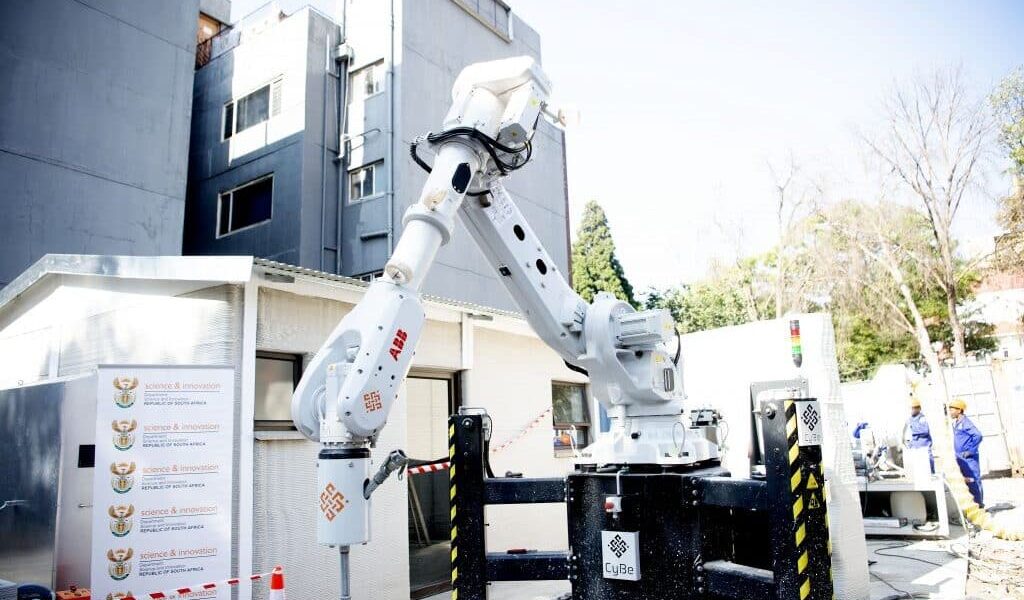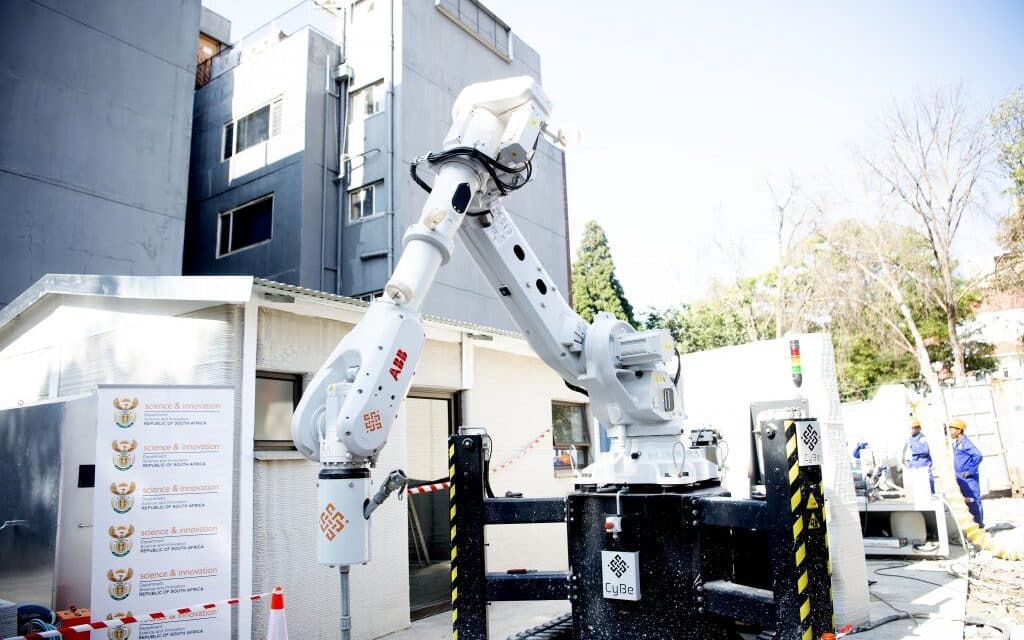3-D Printing Innovation at The University of Johannesburg Will Change Africa’s Construction Industry
The 3D printer at the University of Johannesburg can complete a house in one day. The finished house is stronger, can handle fire better, and is better insulated than conventional houses.
How it Works: 3-D Printing of Houses in South Africa
This 3D printer at UJ is fast. A house can be completed in one day – quicker than traditional construction.
The 3D printer uses a specific type of cement that dries faster than normal cement used in the construction industry. It can print almost any structure. For any additional elements, such as a bench or pot for the garden, the design is simply loaded into the machine, which then creates it out of the cement.
Addressing Employment Impact
In an interview with AfricaLive, University of Johannesburg vice chancellor Prof Mpedi said “We seek to help address the serious housing shortage in South Africa.
“This technology will be useful in addressing the sprouting of squatter camps and shanty towns.
“We are cognizant of the fact that access to housing is a human right and we are working with the National Department of Science and Innovation to ensure this project has a big impact.
“As we move to the demonstration phase, we must think of the impact this project could have on industry workers such as brick layers.
“We want to avoid solving one problem by creating another. This technology will require workers to get reskilled to keep up with the trends of the industry.
The Headlines: How 3-D Printing Is Transforming African Construction & Engineering
- Faster Builds: 3D printing can cut construction times by up to 70%.
- Reduced Waste: Precise printing minimizes material use, leading to up to 70% less CO2 emissions.
- Sustainable Materials: 3D printing allows for eco-friendly and recyclable materials.
- Cost-Effective Housing: 3D-printed structures can offer significant cost savings.
- Job Creation Potential: New opportunities can arise in printer operation, maintenance, and 3D design.
Future Impact of South Africa’s 3-D Printing Research
The University of Johannesburg views 3D-printed houses as a tangible and sustainable solution to South Africa’s housing crisis.
The technology has the potential to create new job opportunities and drive economic development, but only if implemented strategically alongside workforce training and government support.
With a comprehensive approach that includes education, incentives, and a national plan, 3D printing could revolutionize the construction industry and contribute to alleviating the country’s housing backlog.
Moreover, vice-chancellor Prof Mpedi advocates for developing a national plan for reindustrialization, with 3D printing as a catalyst.
This plan should provide incentives for companies to invest in 3D printing technology, thereby increasing productivity and driving economic growth.
By embracing this advanced manufacturing technique, South Africa can position itself at the forefront of a new industrial revolution.
AfricaLive is mapping out the exciting 3D printing projects emerging across Africa here.
The future of 3D printing in South Africa looks promising, particularly in addressing the country’s housing crisis.
Professor Mpedi proposes introducing 3D printing as a compulsory subject in technical schools, TVET colleges, and universities. It is now time to promote literacy and widespread adoption of this technology, equipping the workforce with the necessary skills to leverage its potential.
FAQ
3D printed houses are faster to build (up to 70% faster), produce far less waste and CO2 emissions (up to 70% less), can utilize more sustainable/recycled materials, and can potentially provide more affordable housing solutions.
The 3D printer at UJ can complete an entire house structure in just one day.
The 3D printed houses are stronger, more fire-resistant, and better insulated than conventional houses built with standard methods and materials.
While some traditional construction roles like bricklaying may be impacted, 3D printing opens up new job opportunities in areas like 3D printer operation, maintenance, and digital design. Reskilling workers is seen as important.
Vice Chancellor Prof Mpedi advocates making 3D printing education compulsory in technical schools/universities, developing a national reindustrialization plan centered on 3D printing, and providing incentives for companies to invest in the technology.







